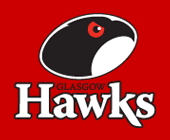|
IN TODAYS HERALD
KEVIN FERRIE, Chief Rugby Writer December 09 2008
A breakaway by Scotland's leading clubs from the national rugbyunion could be just what is needed to prove theirvalue to themselves andto sport in general.
Shock was generated, both at Murrayfield and among the clubs themselves, when Billy McHarg, president of Ayr RFC, told The Herald about plans to separate clubs currently contesting Premier One of the Scottish Hydro Electric leagues from Scottish Rugby Union control.
Discussions between the SRU and representatives of the Premier One Forum rapidly produced a joint statement yesterday as efforts were made all round to stress that this was no rebel-run revolution.
Perhaps, though, the SRU in particular should welcome any such plan, which would solve many of its problems.
Throughout rugby's open era, which began in the mid-1990s, Scotland's Premier One clubs have agonised over their status, with repeated calls for them to take on a semi-professional role. Until now, though, those plans have invariably been based upon the need for handouts from the governing body.
Whether as funding to run academy-style sides or prize money to incentivise them to reach higher standards, that meant taking money from the communal pot into which the vast majority of, if not all, clubs in Scotland have contributed.
If Premier One clubs now think they can be self-sustaining, and can generate not only enough money to operate on a semi-professional basis but to provide prize money for their competitions, they should be encouraged to do so.
Of course, many in those clubs are sceptical about their capacity to do so and the likes of McHarg, who admitted yesterday that the subject had merely been "talked about at the last Premier One Forum meeting", may be surprised at how difficult it is to get agreement for a detailed plan. Never more than in thecurrent financial climate has it looked riskier for clubs to go it alone.
Meanwhile, control-freakery remains an aspect ofSRU administration that may stand in its way.
Perhaps most important of all, though, is the repeated mistake made when referring to Premier One clubs as thegrassroots of the game. As our accompanying panel demonstrates, only three of the current Scotland squad were developed, as junior players, by Premier One clubs.
There is also a fundamentalinconsistency in the argument of those in clubs who think that Premier One should somehow stand alone as a bridge to the full-time professional game.
Either they, like all other clubs, are equal members of the SRU with a responsibility to develop players who might play for Scotland, or they are some sort of finishing school.
When they talk about the SRU's alienation from the club game, though, if they think that is the case, then they may find that their own thinking is alien to that in clubs further down the leagues.
The problem with treating Premier One as something separate is that it creates an artificial mechanism wherebya particular number of clubs at a snapshot in time, whether it be eight, 10 or 12 of them, are funded in such away that they become a self-sustaining elite.
It may be that, in the first instance, parameters would be drawn up requiring, for example, floodlights, which would rule out Melrose and would instead allow in the likes of Falkirk, who have steadily climbed up the league over the years.
Whatever that group is, though, once it has been established and has access toadditional funding, its members will be able to trawl the country picking off the best talent at other clubs, to such an extent that it will probably be there forever.
Those arguing in favour ofit say there is no difference between them doing so and the professional team set-ups, which do precisely the same to Premier One clubs and others. The fundamental difference, though, takes us back to the old clubs v districts debate of the late 1990s, and the attitude of the clubs further down the leagues.
Lower-league clubs are proud to see their players move into the separate tier that is pro rugby, in the hope that is the stepping stone to them representing Scotland.
There has always been, and always will be, resentment among volunteers who have devoted endless hours to developing young players only, at the point at which they may become useful to their club's first XV, to have them poached by richer, neighbouring clubs.
If Premier One stands alone, SRU funding can be directed, as it should be, into those clubs with the most vibrant youth development programmes. That would certainly make a breakaway easier for the clubs in the lower leagues to digest.
It will, though, require some creative thinking by those putting these proposals together to make them attractive to all in the clubs, as well as a level of imagination, and willingness to embrace change, from the SRU forwhich it has not been noted down the years.
This article was posted on 9-Dec-2008, 09:23 by Hugh Barrow.
|
|









